Revell 1/72 Be-6 Madge
This was a build from 2013, and was my first attempt at scratch building out a cockpit, and for using a oil dot filter treatment to breakup a single color scheme.
This was an old kit, and the cockpit area was just a solid blank of plastic intended to be covered over by the canopy. I found some old pics of a deteriorating Madge (included) and used what I could see as direction to build out the cockpit - starting with reaming out the solid plastic with my dremel. (This build was before I thought about WIP pics). Unfortunately, the canopy is of such quality that you really can't see the detail - only that something is under the glass besides solid plastic!
I also added chin scoops and vents on to the nacelles, as well as the exhaust pipes (see old pic for reference), which were made from cutting sprue elbows to size and drilling them out. The existing intake on the nacelle was not accurate at all, but I decided that was more than I wanted to tackle.
I also added the ariel masts and wires.
I brush painted the bottom a custom mix of blue, and rattle can sprayed the upper surfaces. After panel wash for the few engraved lines around the control surfaces, I used oil washes on the bottom of the fuselage and wing floats to get the "sitting in the water" look, along with a Flory wash (sp?) to get the salt buildup on the floats and aft fuselage. Then used the oil dot filtering treatment to breakup the upper surface color, using white, yellow, a couple of greens and some black.
Decals were all aftermarket, as those in the box were so old they were worthless.
I love unusual subjects (and old, cheap kits), and although it was more work than I intended, I'm glad I tackled it.
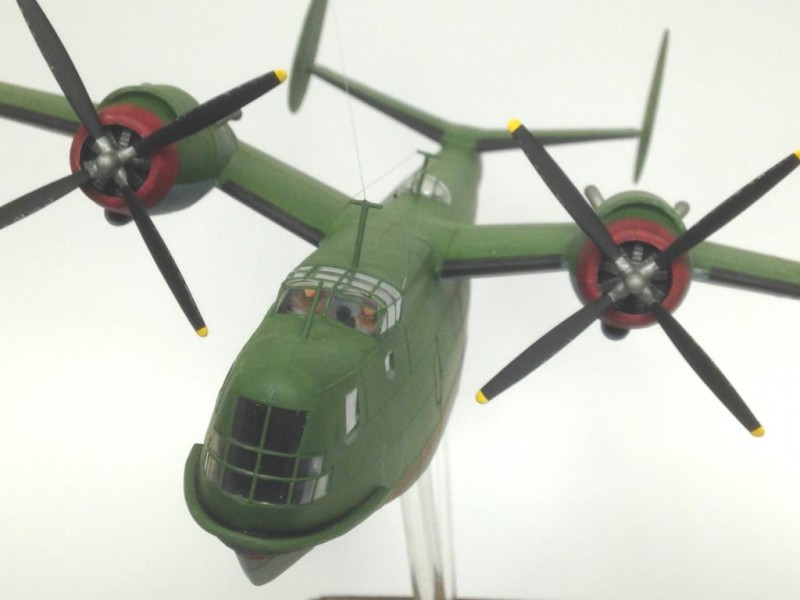
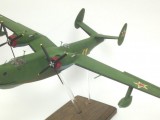
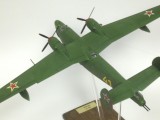
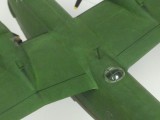

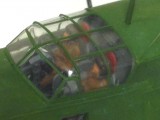

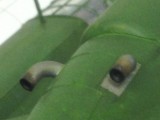
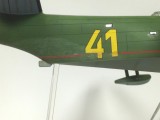
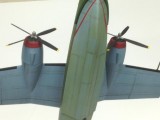
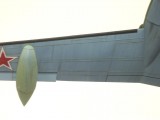

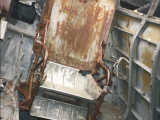
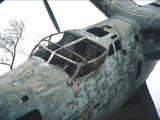
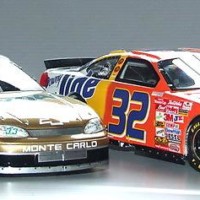
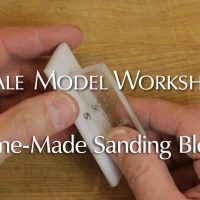
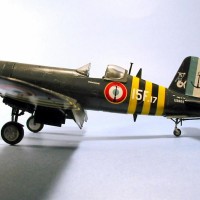
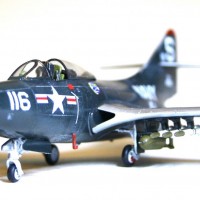
As you said, Greg - an unusual build. One thing, though...can you explain the statement. "... Then used the oil dot filtering treatment to breakup the upper surface color, using white, yellow, a couple of greens and some black.." ? I've never heard of that before. Thanks.
Oil dot filtering is a technique I learned mostly from armor builders. After I've used a dullcoat on the finish (to protect the paint), I use artist oils (Walmart sells a cheap set that contains a ton of colors in smaller tubes for about $10 - great value!). I'll pick colors that would be on the color pallete of my subject (in this case, couple of shades of green, some yellow, and I always include white and a darker color - grey, black or brown). I then work in small sections, and use toothpicks to just dab small dots of the various colors - not too much and not too dense. Then use another brush wetted with mineral spirits to daub at the dots and kind of both smear them a bit, blend them and pick the oils back off the surface. I've learned that when I overspray with dullcoat again when I'm done, it mutes the look depending on how deep the color is (dark blue, as in my Ventura, my work almost disappeared), so I'm not afraid to leave it just a little heavy. On lighter colors, such as the underside blue of this model, it doesn't cover it up so much. On the underside, instead of just daubing the color back off, I also smear it in the direct of the air/water flow.
If you google oil dot filtering on YouTube, you'll find some great videos showing how to use the technique.
Greg
Great looking flying boat! I must have missed this model somehow as you wrote that this is a Revell model. I had a Cold War Soviet flying boat kit from some Iron Curtain country from about 1979(never built it). It was gull wing and looked smilar to yours but I think it had a radar pod in the nose. Do you know if Revell obtained the kit I mentioned and re-did the molds? Thanks.
I have no idea where the original molds came from. I did a quick ebay/google search just to see if I could find a pic of the box, and most of the boxes I see of the Revell offerings are newer boxes than the one I had!
Mike, I can't find it, but the one you had might have been a later design, with turbo props. It isn't the followon BE-10. Real racy looking boat, with the radome up front and gull wings, as you describe.
Flying boats are a sideline of mine, and I always hoped they'd do one of them. There was a 1/144thish, but too small for purist me.
I'll figure it out, and let you know. Thanks for the memory jog.
Mike, the one I was thinking of, which fits your description, is the Beriev BE-12 Tchaika. Gull wing, radar pod in the nose. It's a unique looking aircraft. I see that they only built a few, comparitivly.
I'm curious, myself. Seems to me that the old East German outfit, VEB, had one of these. The only other I am aware of is Trumpeters.
I've got the VEB TU-2, which I recall also had a "solid" cockpit and rear gunners position. At the time, their kits were the only game in town for certain Russian aircraft, in various scales. Pricey, too.
The latest of these, by Trumpeter, ain't cheap, either, though I'd suspect it's much better overall.
I like it Greg – there's a nice, organic feel to the weathering, and I like the attention to detail on the exhausts.
Nice work Greg, really like that you included some actual pictures of the old tub.
Another rare bird. Very nicely painted.
Very nice, Greg. The finishes are subtle - surprisingly so considering your application methods. The archive photos look great. I think I would have been tempted to replicate the beat-up scheme, but nonetheless I like your build.
Well worth tackling, Greg, you must be pleased with the result.
some of my childhood
at the end of the seventies
I did two VEB Plasticard from DDR,
Nice build!
P.k
Greg, I remember that VEB had an early Junkers airliner with a rudimentary interior. Revell reboxed that, either with or without floats, I remember seeing it advertised. It looks like a stretched Junkers F-13, which it probably was. Mother of Tante Ju!
Great build of a cool looking flying boat.
Seeing the effort and struggle you had to get this one done, you will have no problems with the Modelsvit Be-12. Iirc the revell be-6 is a rebox of the even older KP kit. Well done!